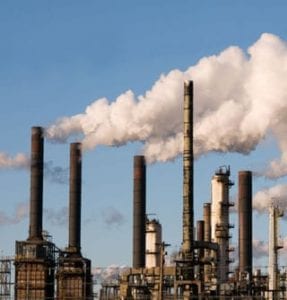Greenhouse gas (GHG) emissions in South Africa, excluding the land sub-sector, increased by 24.9% between 2000 and 2010. Including the land sub-sector, which is estimated to be a net carbon sink, leads to greater annual fluctuations in the total CO2 emitted.
Minister of Environmental Affairs Edna Molewa has published for public comment the National Greenhouse Gas (GHG) Inventory for South Africa, for the period 2000 to 2010. The Department of Environmental Affairs initiated a process to develop South Africa’s fourth national GHG inventory covering the period 2000 to 2010 in 2011. The objective of the work is to ensure that South Africa has an understanding of both its emissions profile and the key drivers of change in emissions. In addition, this report will be part of South Africa’s efforts to meet its international reporting obligation under the United Nations Framework Convention on Climate Change (UNFCCC) which was ratified in August 1997. The reporting of these emissions is in line with the new 2006 guidelines of the IPCC. The utilisation of the 2006 IPCC guidelines was to ensure that the GHG inventory report is accurate, consistent, complete and transparent. It also reports on the GHG trends for a ten-year period (2000-2010). Results In 2010 the total GHG emissions in South Africa, excluding the land sub-sector, were estimated to be at 579 256 Gg CO2eq. CH4 and PFC emissions have increased by 12% and 3.4% respectively between 2000 and 2010, while N2O emissions showed a decline of 1.8% over the same period. HFC’s were only included from 2005 and have increased dramatically over the 5 year period. The report identifies key categories which indicate those activities that have significant contribution to the total profile of South Africa’s emissions. The key categories were identified by carrying out the IPCC Tier 1 level and trend assessment with the 2000 and 2010 GHG inventories.The key categories for 2010 (excluding the land sub-sector) are energy industries (solid fuels), road transportation, manufacturing and construction (solid fuels) and enteric fermentation. An assessment of key categories over the 2000 to 2010 time period shows other sectors (solid fuels), other emissions from energy production, enteric fermentation, and iron and steel production to be key categories.
GHG inventory system South Africa is currently in the process of creating a national GHG inventory system that will ensure that the country prepares and manages data collection and analysis, as well as all relevant information related to climate change in the most consistent, transparent and accurate manner for both internal and external reporting. This national system will be managed by the National Inventory Unit (NIU) within DEA. The South African Air Quality Information System (SAAQIS) will play a major role in managing reporting and processing of data. Only emissions from energy and industrial processes will be estimated using the SAAQIS. Due to their complex emission estimating methods, emission sectors such agriculture, forestry, land use and waste are to be estimated outside the SAAQIS system. The SAAQIS will in turn, ingest the outputs of models used in these sectors so that it can generate a national emissions profile. Members of the public are invited to submit written comments on the national GHG inventory to the minister within 30 days of the publication of these notices.







